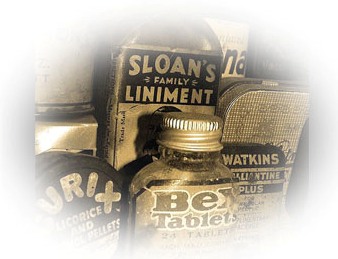 Sherman Democrat
4 July 4, 1976 America Always Edition EARLY DOCTORS RELIED ON NATURE Two hundred years ago when kids go sick their mothers likely turned to medicine cabinets containing rose hips, mint, powdered peonies, saffron, Peruvian bark, and even tobacco, to make them well again. In those Colonial days, doctors made house calls, often accepting a traditional stiff drink by way of welcome after their horseback ride. Some doctors wound up alcoholics. Doctors then were not usually well regarded, and indeed were often the low men on the social-economic totem pole. It was even dangerous to call them in. The common medical practice was to bleed the patient to the point of fainting, and administer purges and emetics to induce diarrhea and vomiting, regardless of the ailment. A burst appendix meant death. An accident resulting in severe fracture of the arm or leg, foot or hand meant amputation, carried out without anesthetics. Making a hole in the skull was not uncommon to relieve pressure. It could help in certain fractures of the skull, or sometimes when hemorrhage was causing pressure. This picture of medical care and health at the time of the Revolution was sketched in an interview with Dr. Estelle Brodman, professor of history of medicine and chief librarian at the Washington University School of Medicine in St. Louis. "Lots of people died from the treatments, not the diseases, I'm convinced of that," she says from her research into various records, diaries, books and historical accounts. The colonists' "herbs and simples" often were credited with cures, probably because they did no harm, and many tough human beings were going to survive anyway. But behind their homely remedies sometimes there was what is regarded now as medical sense. Peruvian bark, for example, contained quinine and was a good treatment for "ague," the fever that often meant malaria, Dr. Brodman says, although quinine had no effect on fevers from other cause. Malaria in those days was common all the way up through New England. Willow bark, another remedy, contained a form of aspirin, a fact not know then, of course. The settlers brought over poppies and opium, and evergreen plants such as mistletoe to use as an emetic or drug to induce vomiting, or to treat diseases of the stomach, including reactions from spoiled food and dysentery, Dr. Brodman continues. They had calomel, containing mercury, to treat venereal disease and to be a purgative, and used it also for yellow fever with no real success. The harmful effects of mercury on the nervous system and teeth had not yet been appreciated. Housewives and husbands tended to keep their own records on what was good for what, the medical historian says, with such home remedies winning local favoritism. So rose hips, the ripened fruit of the rosebush, were brewed into a drink designed to reduce fever. "It was also a good source of vitamin C, but they didn't know it at the time," Dr. Brodman says. Out of the medicine cabinet came mint "to settle the stomach," and cover the bad taste of other medicines given in concoctions given to children. One treatment borrowed from the Indians was to put a feverish patient in a tent and burn tobacco, creating heat to make the patient sweat, and also fumigating the tent with smoke. Effects on the lungs and eyes were not recorded. Common medicines from carefully planned and tended gardens writes Ann Leighton in her book "Early American Gardens for Meate or Medicine." Water Plantane was used for burns and scalds, and to "draw water out of swelled legs." White Helibore was used by Indians to cure their wounds, "anointing the wound first with Racoon's grease [sic], or Wildcats greese, and strewing upon it the powder of the roots...the powder of the Root put into a hollow Tooth is good for the Toothache." There was also "Sassafras or Ague Tree. The Chips of the Root boyled in Beer is excellent to allay the hot rages of Feavers, being drunk. The leaves of the same Tree are very good made into an Oyntment for Bruises and dry Blows." If the popular medicines were so unscientific, so were some of the "advanced" theories about medicine, especially those which insisted on the practice of bleeding and purging. "Bleeding was considered a cure for yellow fever and cholera, too," says Dr. Brodman. "It was the worst thing that one could do in cholera because patients had lost so much fluid from the disease. Now we know that the treatment for cholera is to give fluids and saline intravenously." Biography Index Susan Hawkins © 2024 If you find any of Grayson County TXGenWeb links inoperable, please send me a message. |